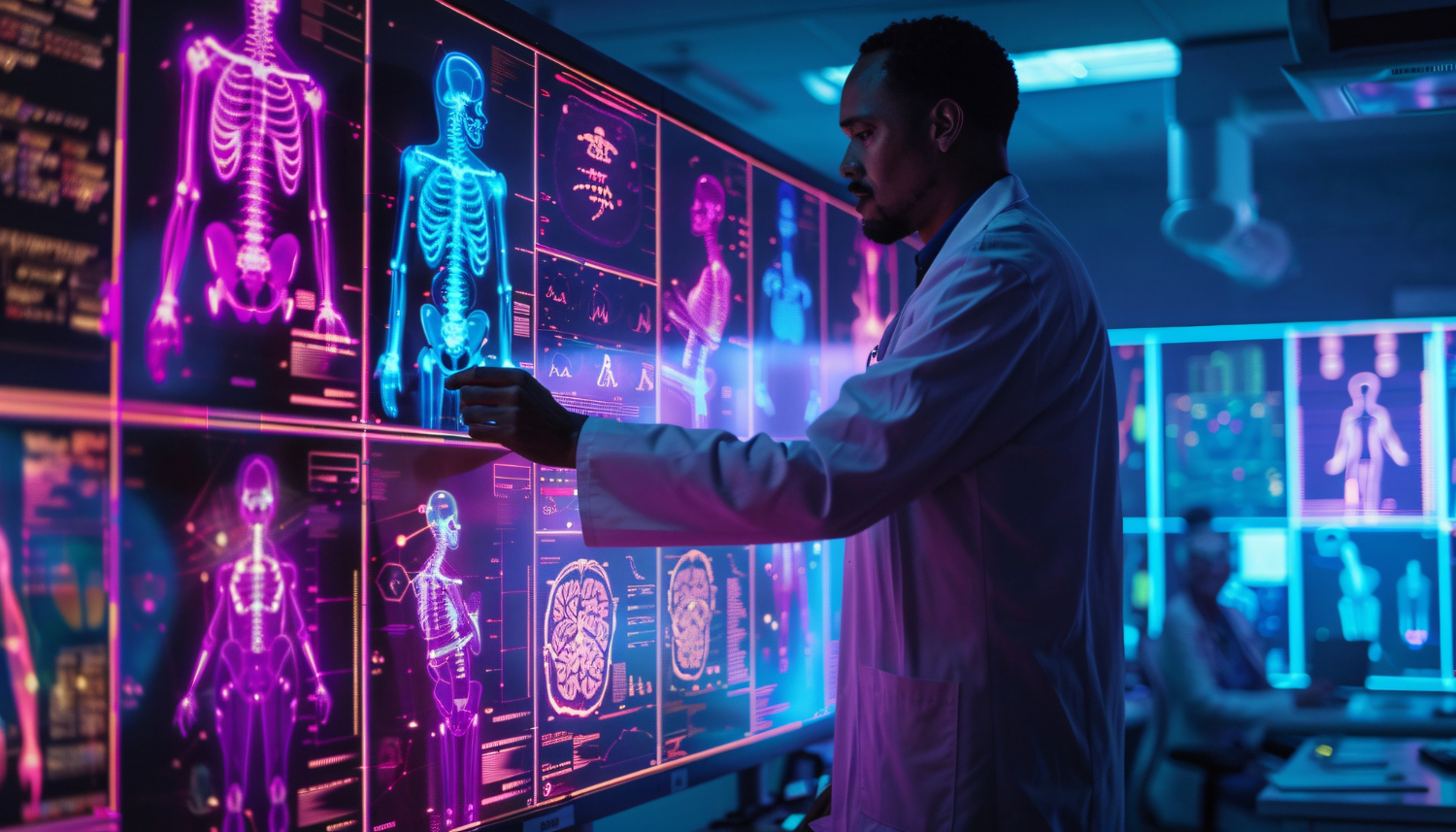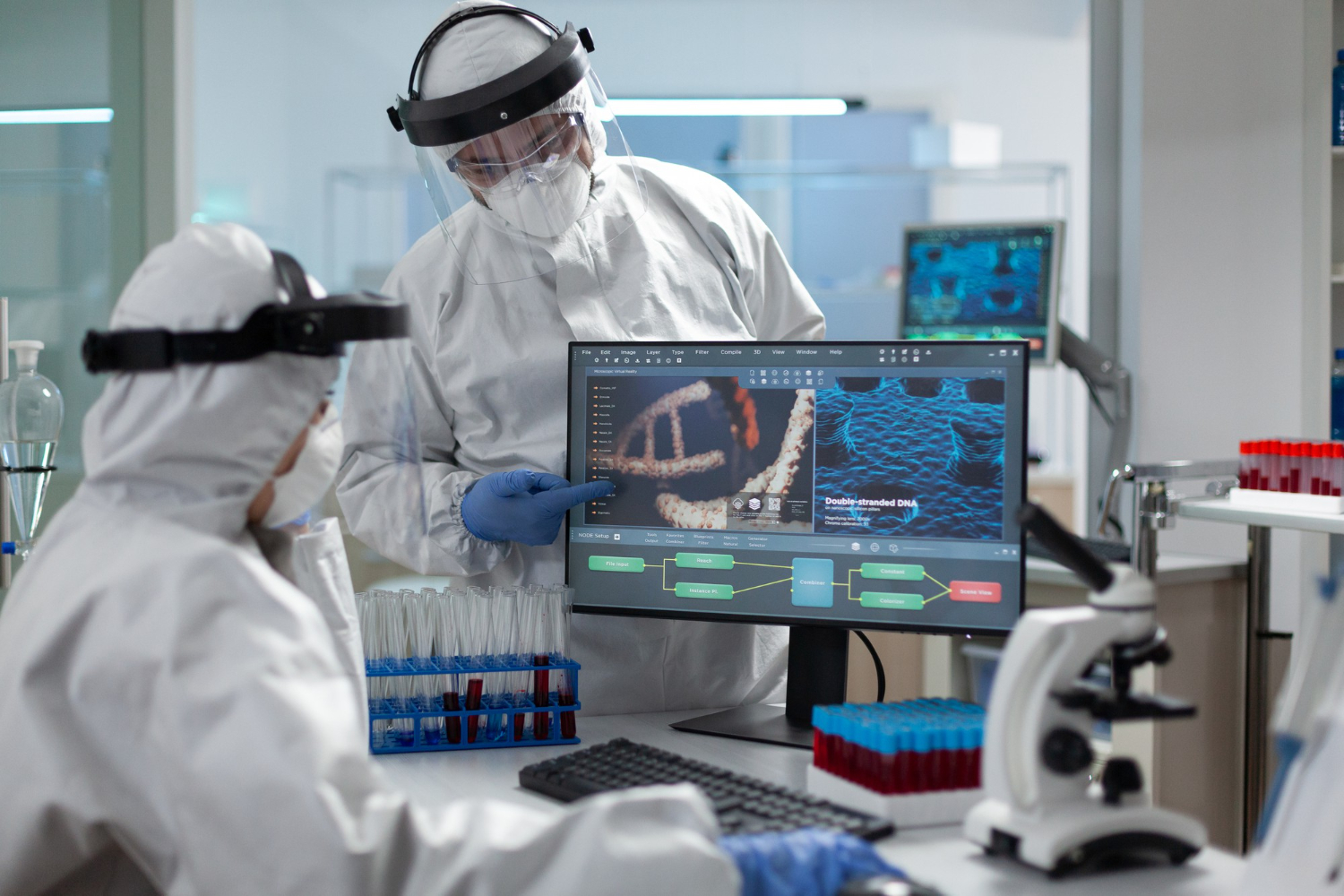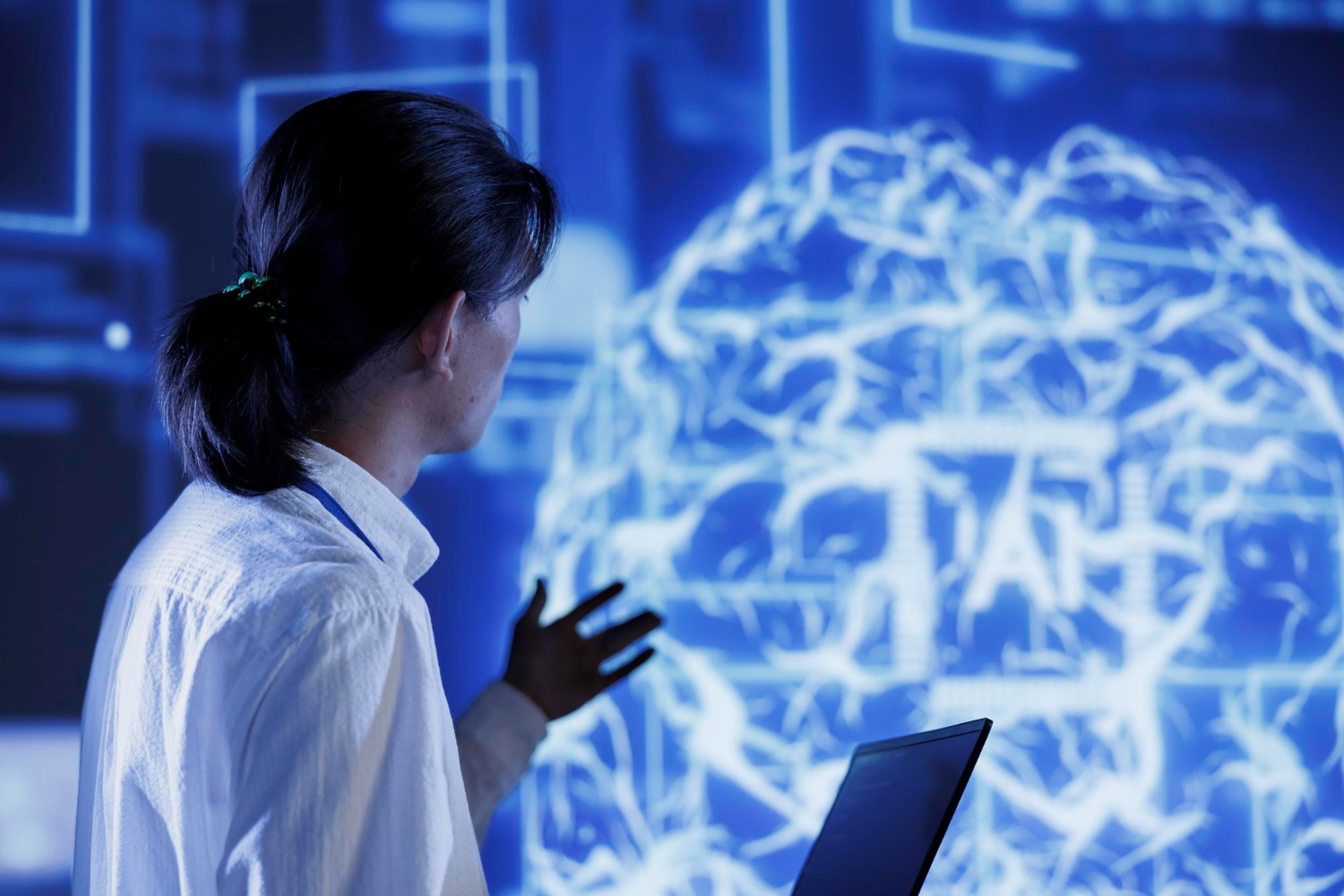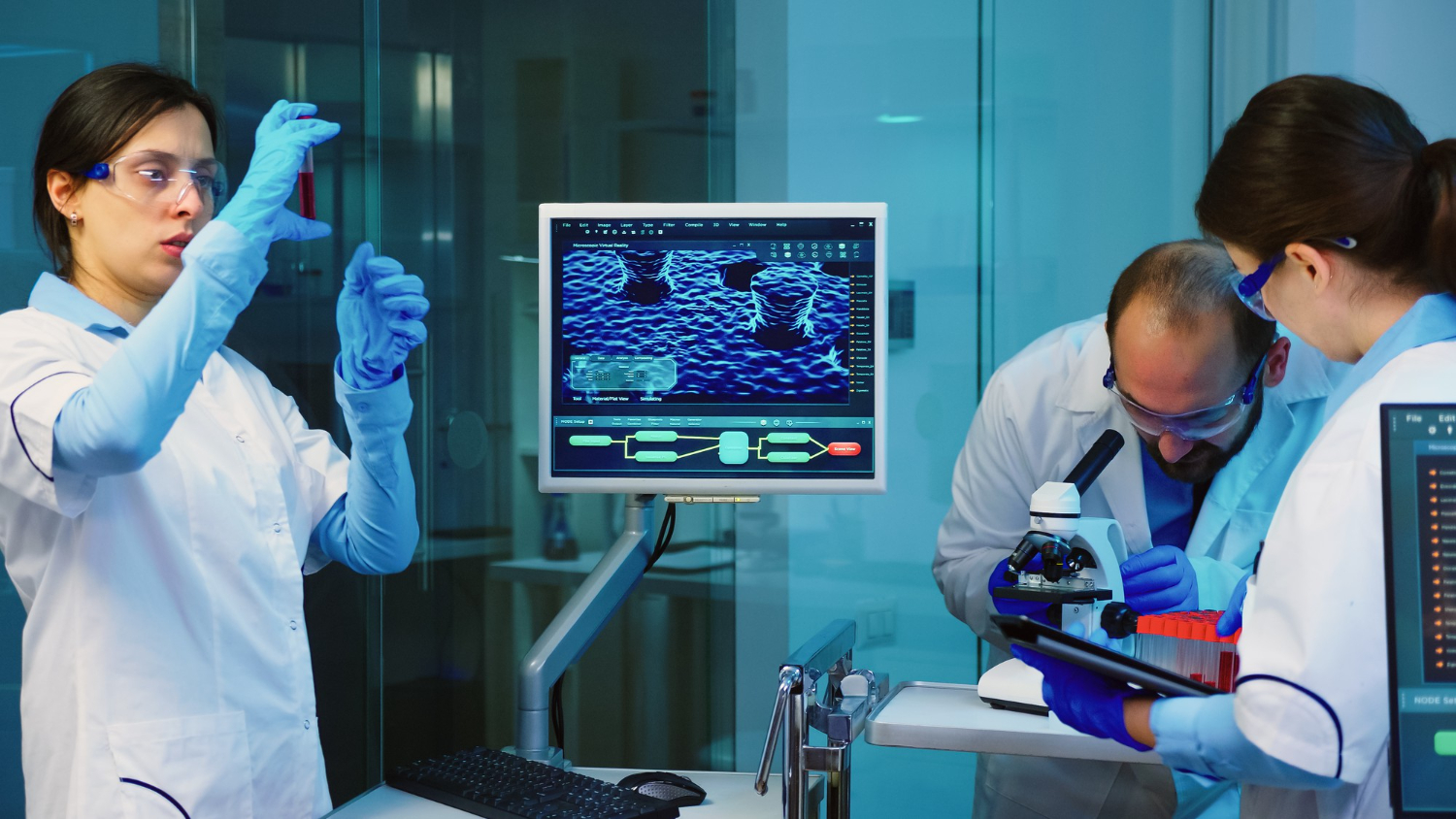Introduction
Artificial intelligence (AI) touches and enhances several industries with unique and valuable innovations. One such industry is the automotive industry. The market size for AI in the automotive industry is projected to grow at an astonishing CAGR of over 55% from 2023 to 2032. This growth trajectory is only possible because AI can be applied to almost every avenue of the automotive sector, from design and manufacturing to operations and customer experience.
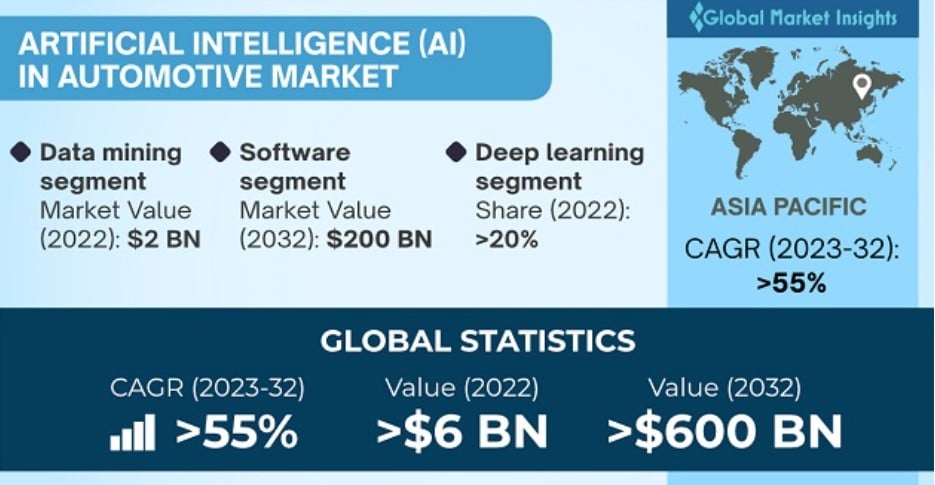
The automotive industry has embraced AI in a way where AI is not just being used as a tool for incremental improvements but as a catalyst for revamping the industry altogether. AI’s footprint can be seen in generative design algorithms that push the boundaries of vehicle aesthetics and functionality to advanced machine learning models that predict maintenance needs and optimise supply chains.
In this article, we’ll discuss how AI is being applied in the automotive industry, the benefits of these applications, and the future of AI in the automotive industry.
The Role of AI in Automotive Manufacturing
Automotive manufacturing involves several stages, including designing the vehicle, creating and assembling parts, and finally, putting everything together to create the final product. AI can be applied at various stages of this process to increase precision and efficiency. Let’s explore some of the key applications of AI in automotive manufacturing.
Computer Vision for Quality Control
Computer vision deals with replicating the ability of a human to see things using AI and, by doing so, takes over certain tasks that would typically require human oversight. For example, quality control is usually performed by an inspector who spends much time and energy visually examining various processes and end products.
In automotive manufacturing, computer vision can be applied to component inspection, assembly verification, paint and finish inspection, functional testing, and a final quality check before the vehicle leaves the factory.

At the heart of these applications lies a branch of computer vision known as machine vision. Machine vision aims to surpass human vision by making quantitative and qualitative measurements. Minuscule object details, too small to be seen by the human eye, can be assessed and inspected with high precision and fewer errors at faster speeds.
On an automotive manufacturing production line, machine vision systems can inspect hundreds or thousands of parts per minute, reliably and repeatedly, far exceeding the inspection capabilities of humans. In line with this, the automotive industry is a major contributor to the machine vision market, with the automotive end-use industry holding the largest market share of 19.68% in 2022.
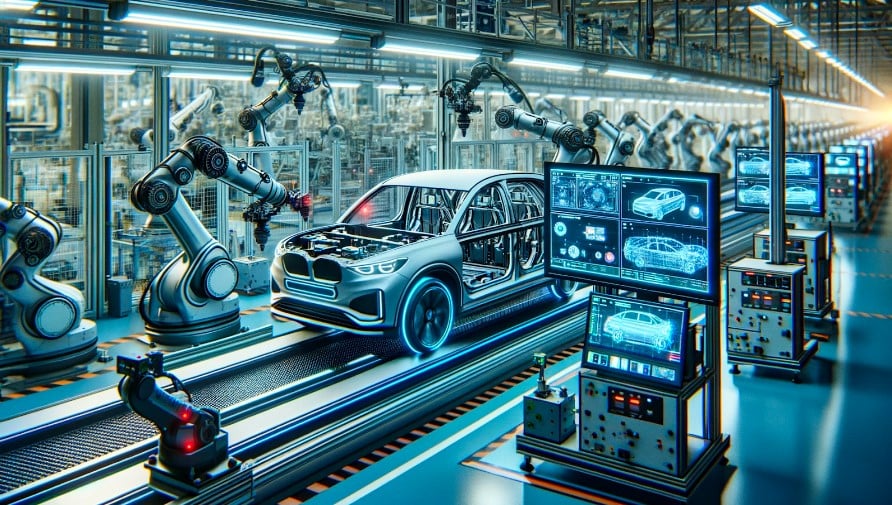
The algorithms that power machine vision are complex and varied. They range from basic image processing techniques to advanced deep-learning models. Image processing algorithms, such as edge detection, pattern recognition, and object segmentation, are foundational in identifying and categorising visual elements in an image. These techniques allow the system to recognise shapes, detect anomalies, and classify objects based on predefined criteria.
Furthermore, deep learning models are trained using large datasets of images, enabling them to make accurate predictions and decisions based on visual input. In automotive manufacturing, these models are crucial. For instance, Convolutional Neural Networks (CNNs) can be trained to recognise specific characteristics of a well-painted surface, allowing it to identify defects like drips or inconsistencies in paint application. Similarly, pattern recognition algorithms can be used to ensure that all parts are correctly aligned and assembled.
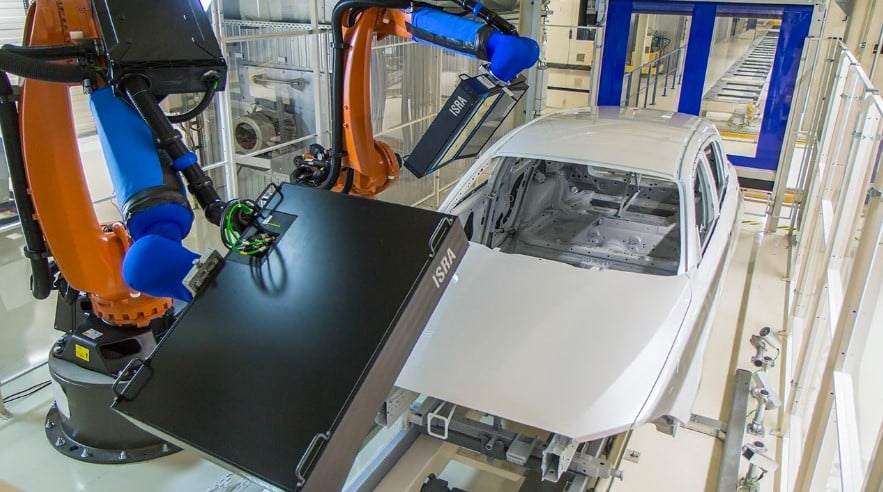
Moving from machine vision and its applications in quality control, let’s dive into how generative AI plays a pivotal role in designing new vehicle models. While machine vision ensures the precision and quality of existing components, Generative AI takes automotive manufacturing to the next level by improving the creative aspect of design and innovation.
Generative AI in Designing New Vehicle Models
Generative AI, a cutting-edge technology, leverages advanced algorithms like Stable Diffusion and large language models for innovative design and engineering. Companies like Mercedes-Benz, BMW, and Toyota are using generative AI to accelerate design iterations, optimise vehicle performance, and streamline manufacturing. The technology is revolutionising the way new vehicle models are conceived and produced.
Generative AI algorithms use AI-driven optimisation to create vehicle designs that are not only visually striking but also highly functional. For example, as reported by Toyota, generative design can create complex, organic shapes that were previously unimaginable, allowing for innovative vehicle structures and components. This technology can even factor in measures like drag, impacting fuel efficiency, which is crucial for electric vehicles. By prioritising aerodynamics in design, electric vehicles can improve their range without needing larger, costlier batteries, aligning with sustainability goals.
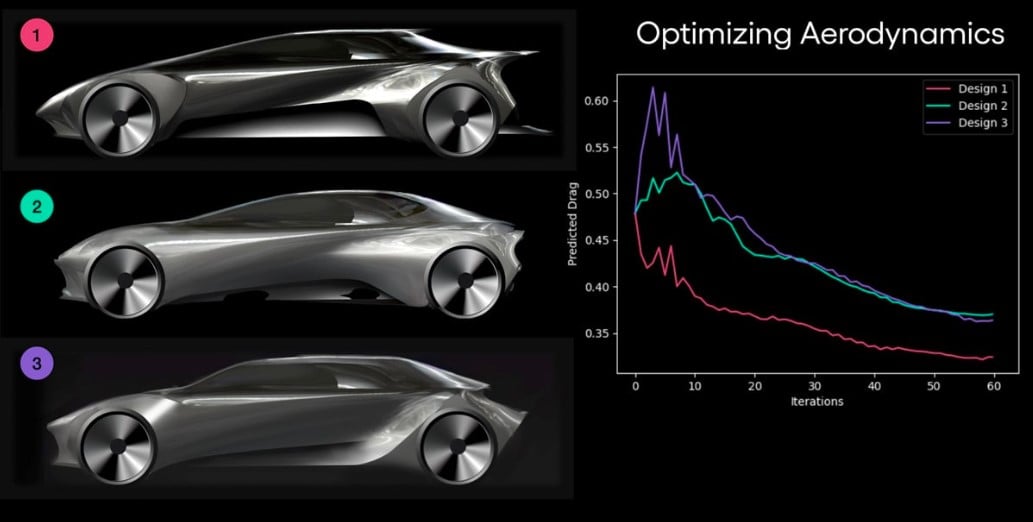
One of the key advantages of Generative AI is its ability to generate and evaluate numerous design iterations rapidly. This allows automotive engineers and designers to explore various possibilities relatively quickly. Instead of manually fine-tuning every detail, they can rely on AI to generate and assess design options, helping them quickly identify the most promising solutions.
Next, let’s understand the practical implementation of these AI applications in automotive manufacturing by harnessing the power of GPU acceleration and leveraging IoT edge computing solutions.
GPU Acceleration and IoT Edge Computing in Manufacturing Plants
Practical implementation is key to bringing the potential of AI to fruition in automotive manufacturing. This is where technologies like GPU acceleration and IoT (Internet of Things) edge computing come into play.
Integrating GPUs into manufacturing plants enhances real-time data processing. These specialised processors are exceptionally well-suited for complex calculations and data processing. For instance, machine vision systems can quickly process and analyse visual data from production lines.
IoT edge computing complements GPU acceleration by bringing intelligence to the edge of the manufacturing process. IoT devices and sensors are strategically placed throughout the production environment to collect data in real time. This data is processed locally on edge computing devices, reducing latency and enabling swift decision-making. With a growth rate of 26.7% over the forecast period, the market space for IoT in the automotive industry is rapidly expanding, and its integration into manufacturing is contributing to its growth.
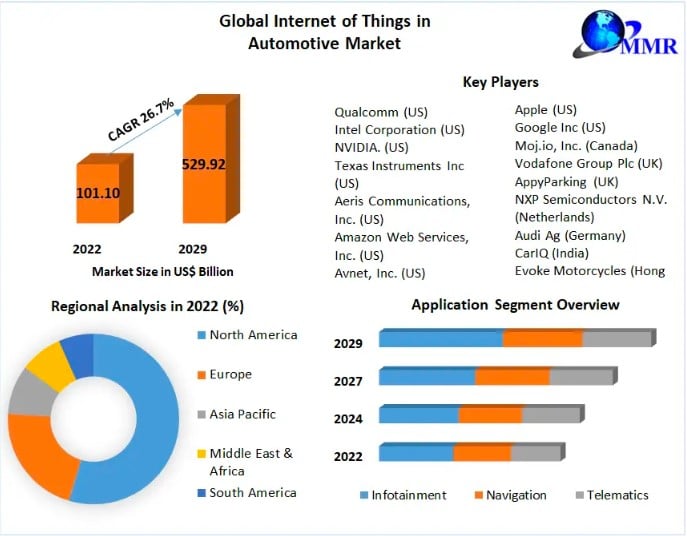
The synergy between GPU acceleration and IoT edge computing creates a dynamic ecosystem where AI-driven insights and actions are seamlessly integrated into manufacturing. It enhances efficiency and contributes to sustainability by reducing waste and energy consumption.
Reinventing Pathfinding with AI-Driven Navigation Systems
AI in Vehicle Safety and Maintenance
AI’s role in the automotive industry extends beyond manufacturing and can significantly enhance vehicle and passenger safety and maintenance post-production. After a car leaves the factory, AI can be applied to increase safety and monitor the vehicle for more efficient maintenance.
This includes predictive maintenance using IoT sensors. Data is collected from various components, and AI algorithms are used to foresee maintenance needs and identify potential issues in advance. This predictive maintenance approach improves routine checks into a seamless and data-driven process.
Also, computer vision can improve vehicle safety by analysing visual data to detect obstacles and monitor driver behaviour. For example, the AI-powered driver monitoring system developed by Cipia and implemented in Chery’s car models uses advanced computer vision algorithms to analyse infrared video from cameras equipped with infrared emitters. This system can detect unsafe behaviours like distracted driving, drowsiness, and seatbelt usage. These alerts help prevent accidents by ensuring drivers are attentive and follow safety protocols.
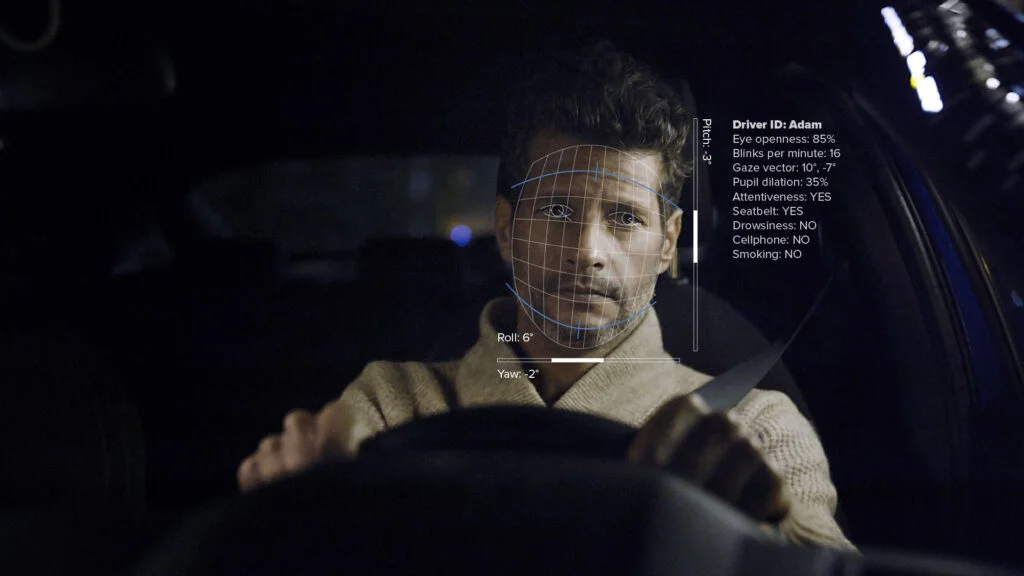
Multiple safety scenarios could come up, and generative AI comes in handy to simulate safety features and test complex scenarios in virtual environments. Based on the results of these tests, the AI-enabled safety systems can be refined.
We’ve gone through many practical applications of AI in the automotive industry, but AI’s role isn’t limited to enhancing efficiency, precision, and safety. AI can also be applied to elevate the overall driving experience through smart vehicle features.
AI-Powered Smart Features in Vehicles
AI can be integrated with vehicle infotainment systems and customise vehicle settings to redefine the automotive experience. Major car companies like Tesla, Mercedes-Benz, Audi, and Volvo are incorporating AI into their infotainment systems to offer smart features such as voice recognition, mood-based playlists, and driver alert systems.
AI in these systems can adapt to the driver’s routines and preferences. It can even suggest actions like making a phone call at a usual time or tuning into the driver’s favourite radio station. Additionally, AI’s voice recognition capabilities, powered by natural language processing, enable hands-free operation of various features, enhancing safety and convenience.
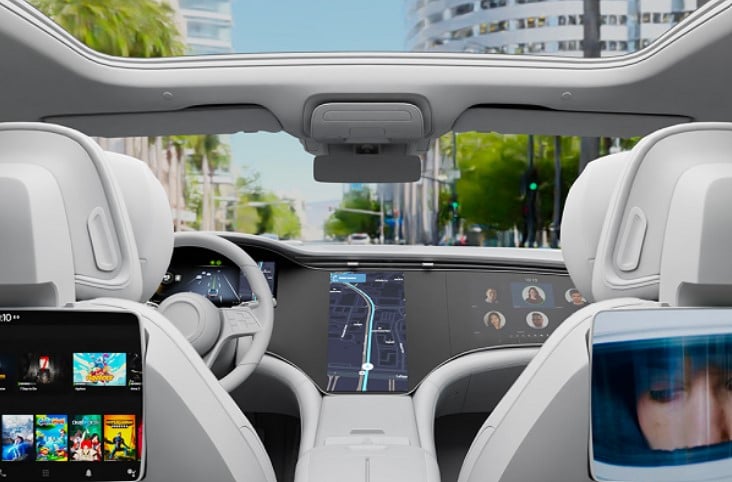
AI can analyse data from the driver’s past behaviours, preferences, and needs to deliver a personalised experience. This includes customising music, navigation, climate settings, and other features. For example, imagine stepping into your car and having it automatically adjust the seat, mirrors, and steering wheel to your preferred settings. AI algorithms analyse your past driving behaviour and patterns to make these automatic adjustments, ensuring that every drive is tailored to your preferences.
Looking forward, let’s see what the future promises in terms of groundbreaking AI advancements in the automotive industry.
The Future of the Automotive Industry with AI
We can look forward to seeing many innovative AI applications in the automotive industry, like connected cars made possible by vehicle-to-everything (V2X) communication and augmented reality (AR) to overlay critical information in the driver’s field of view. These types of applications will push the automotive industry towards autonomous vehicles.
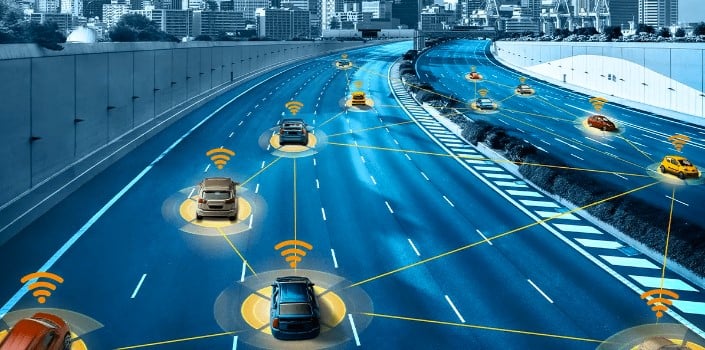
AI paves the way for smarter, more responsive vehicles that can interact seamlessly with their environment and other road users. As these technologies evolve, they are expected to bring us closer to a future where cars can navigate complex traffic scenarios with minimal human intervention. These advancements will likely have far-reaching implications for road safety, traffic management, and overall vehicle performance.
Continue reading: AI for Autonomous Vehicles: Redefining Transportation
What We Can Offer as TechnoLynx
At TechnoLynx, we excel at creating customised AI solutions for your needs. This is possible thanks to our keen focus on specialised domains such as computer vision, generative AI, GPU acceleration, and IoT edge computing. Our commitment to these cutting-edge areas allows us not just to follow trends but to set them.
Our knowledge of generative AI and computer vision enables us to create unique solutions that are innovative and highly effective for specific use cases. Our GPU acceleration and IoT edge computing proficiency ensure that our AI models are powerful and efficient, leading to faster processing and real-time analytics. Combining these strengths, TechnoLynx can answer your needs and deliver high-impact AI solutions.
Conclusion
The integration of AI in the automotive sector is drastically reshaping the industry. It’s transforming everything from manufacturing processes to vehicle safety and the overall driving experience. With advancements in AI technologies like computer vision and generative AI, the industry is not just improving existing practices but also paving the way for groundbreaking innovations. As AI continues to evolve, it’s expected to lead to smarter, safer, and more efficient vehicles, making a significant leap towards the era of autonomous driving. This ongoing transformation highlights the critical importance of adopting AI technologies for future growth and advancement in the automotive industry.
TechnoLynx specialises in designing state-of-the-art solutions specifically for AI applications in the automotive sector. Recognising the significant impact of AI in this field, we’re committed to helping businesses and organisations leverage this technology. Discover the innovative approaches we offer at TechnoLynx and see how our solutions can advance your business into a new era of technological achievement.
Sources for the images:
-
Greenwood, M. (2023) Internet of Things in Automotive Market: Global Industry Analysis and Forecast (2023-2029) Maximize Market Research.
-
Greenwood, M. (2023) Toyota’s new GENAI tool is Transforming Vehicle Design Engineering.com.
-
ISRA VISION. (2022). Fully automatic 100% optical carpaint inspection with production analytics - carpaintvision. YouTube.
-
Schwartz, E. (2022). Nvidia Unveils Drive AI Concierge With Cerence Voice Assistant Support. Voicebot.ai.
-
SotaTek. (2022). Unlocking the Advantages of V2X: Transforming the Future of Transportation. SotaTek.
-
Wadhwani, P. (2022). AI in Automotive Market Size, Share & Trends Report 2032. Global Market Insights Inc.
-
Youd, F. (2022). Eyes on the road: Staying safe with AI driver monitoring systems. Just Auto.



